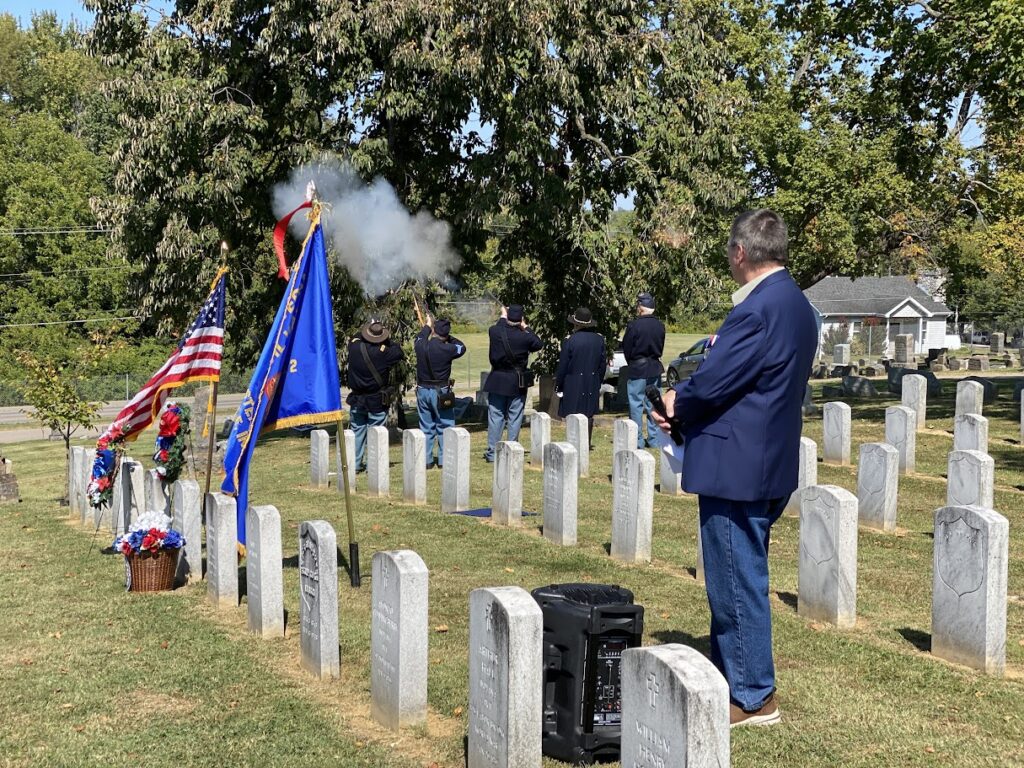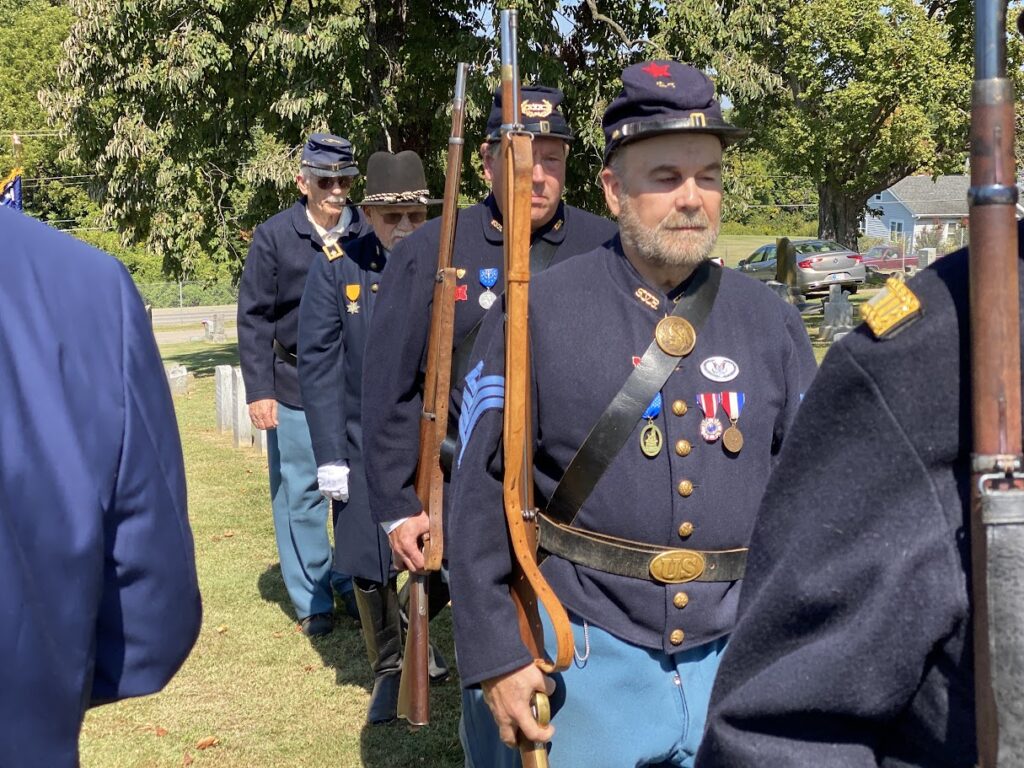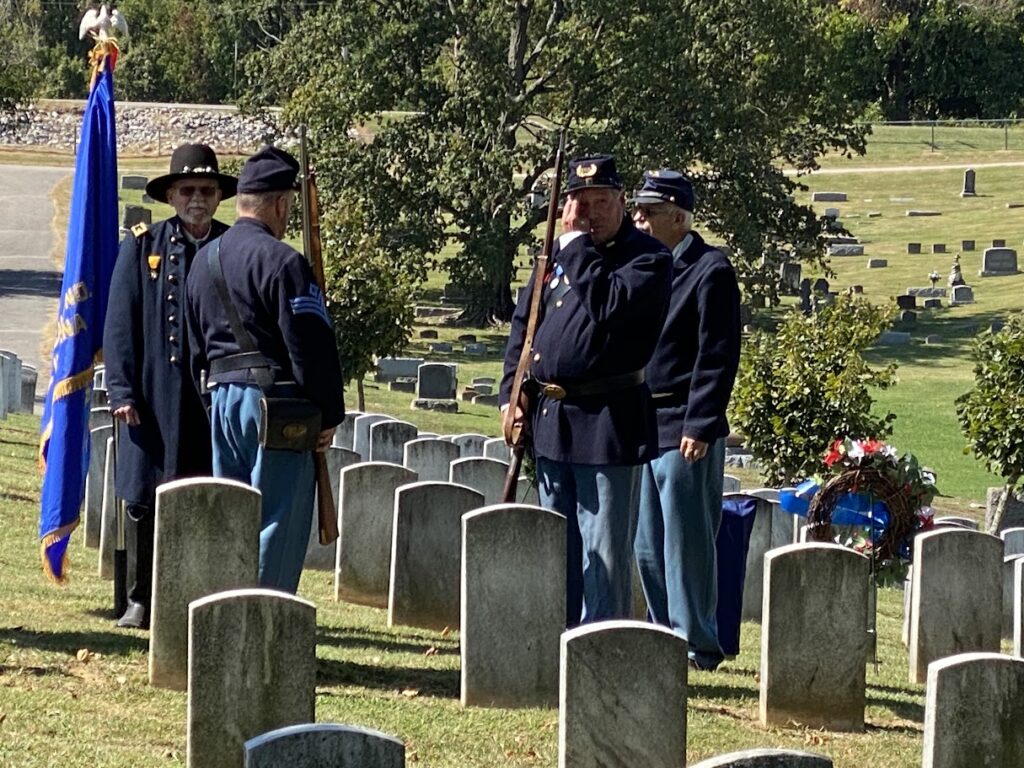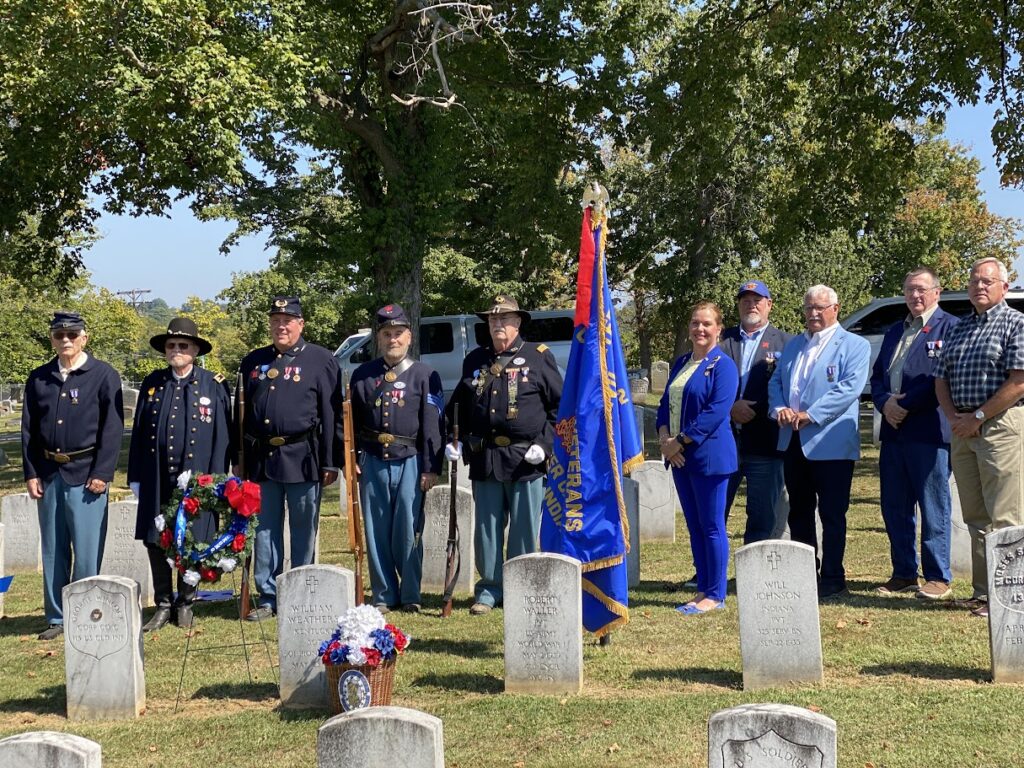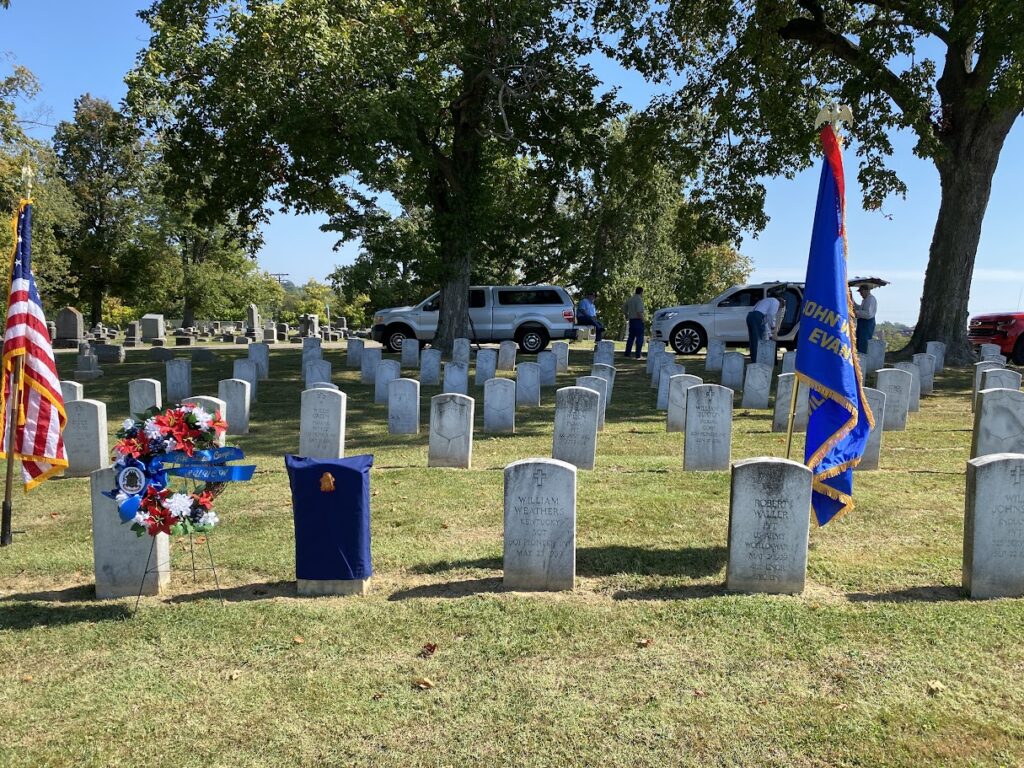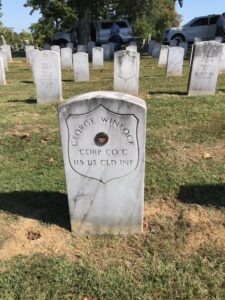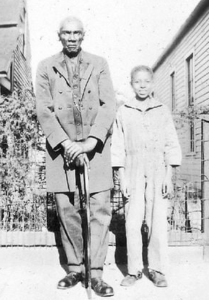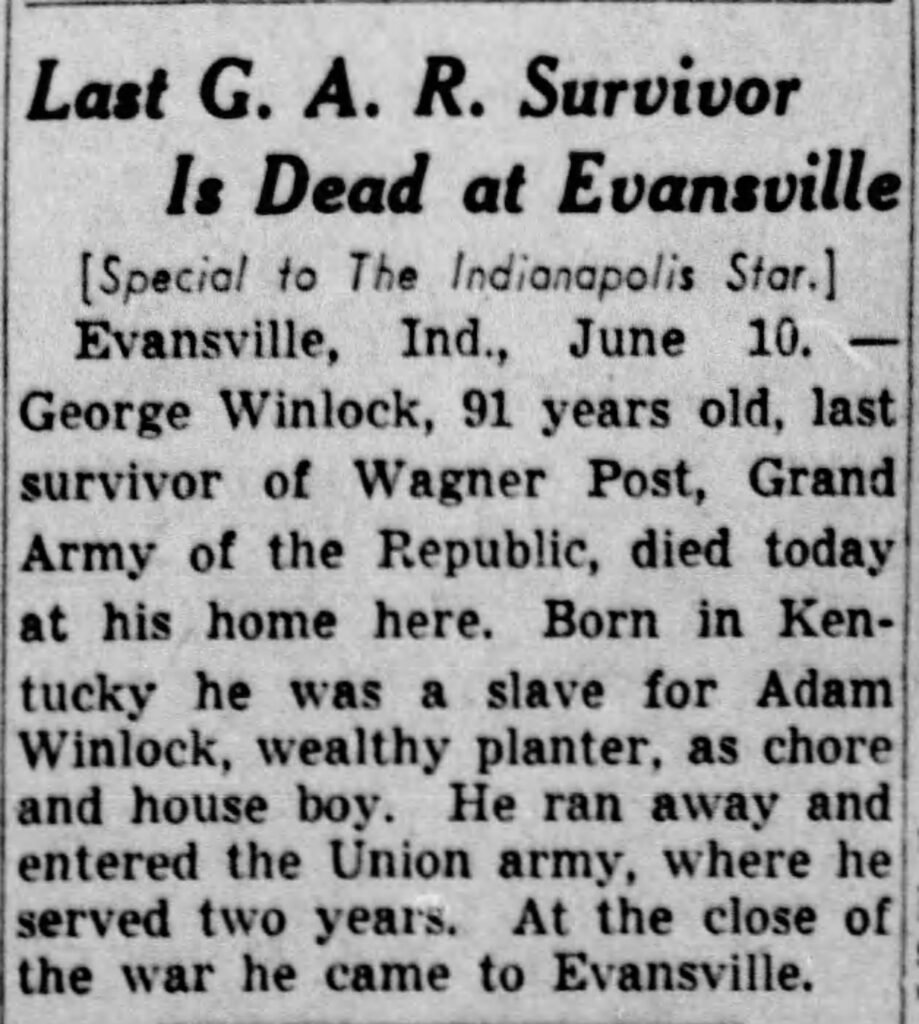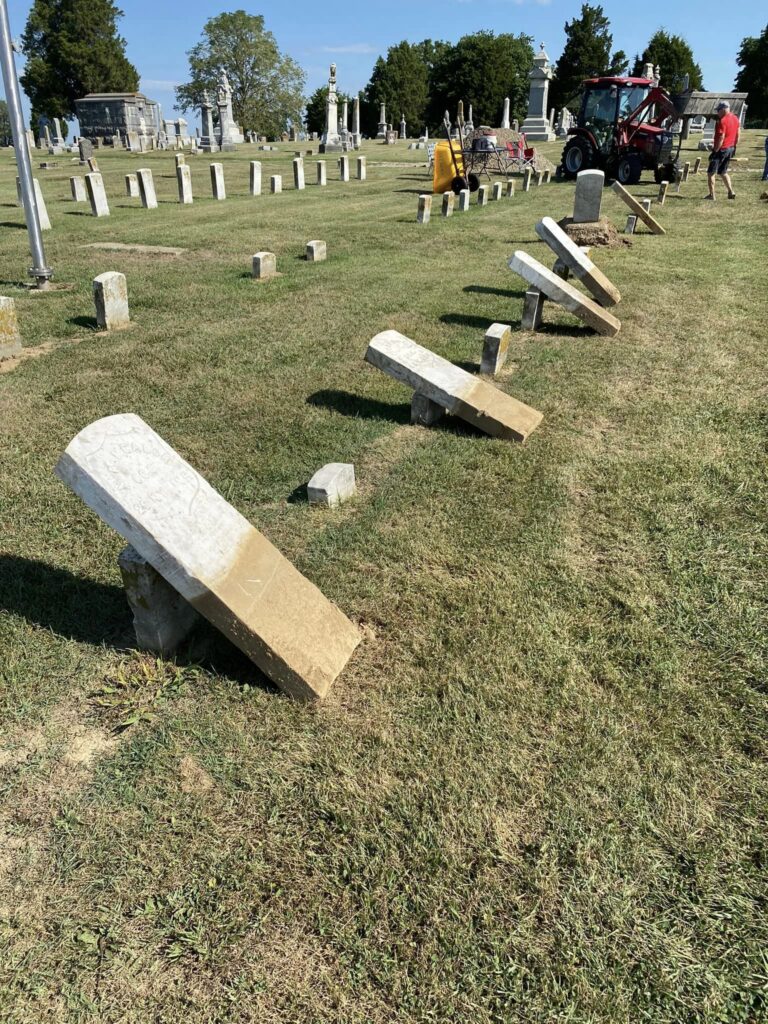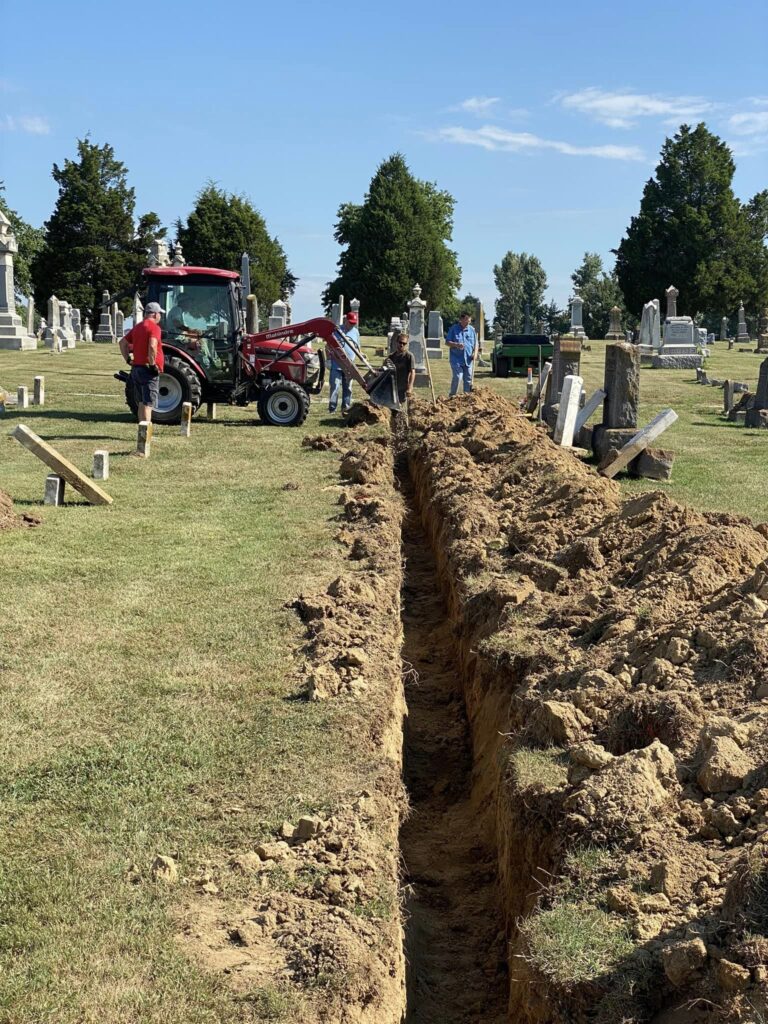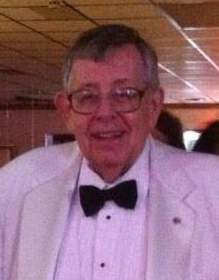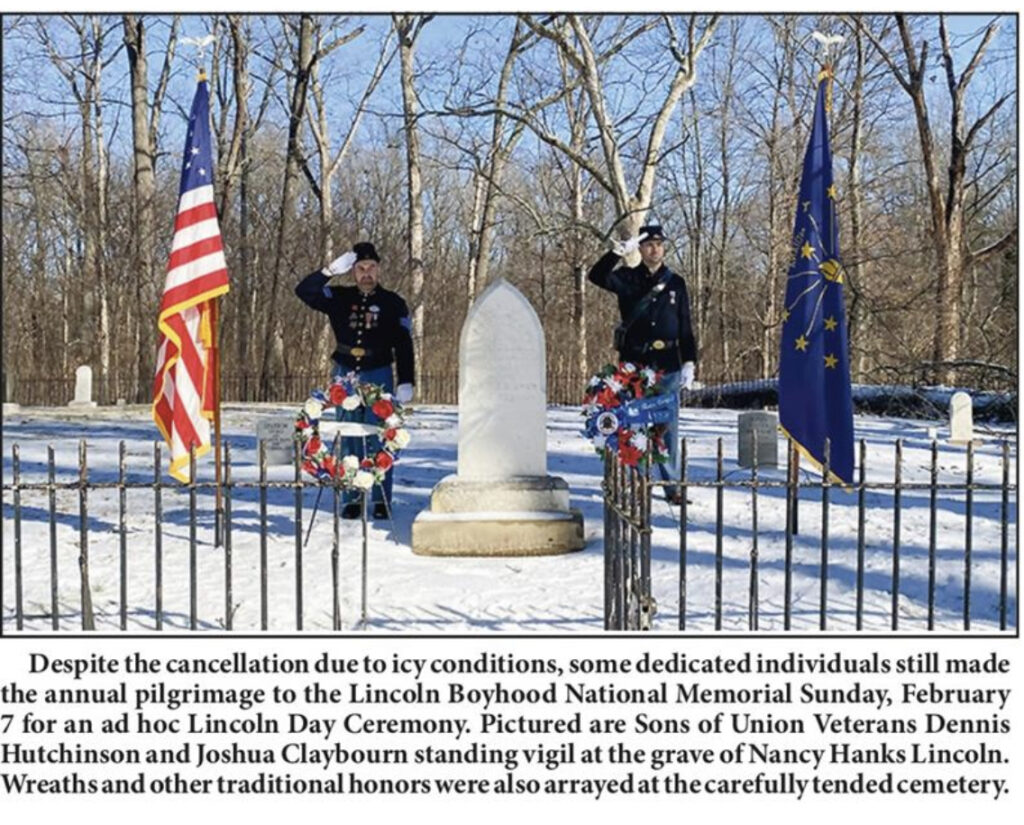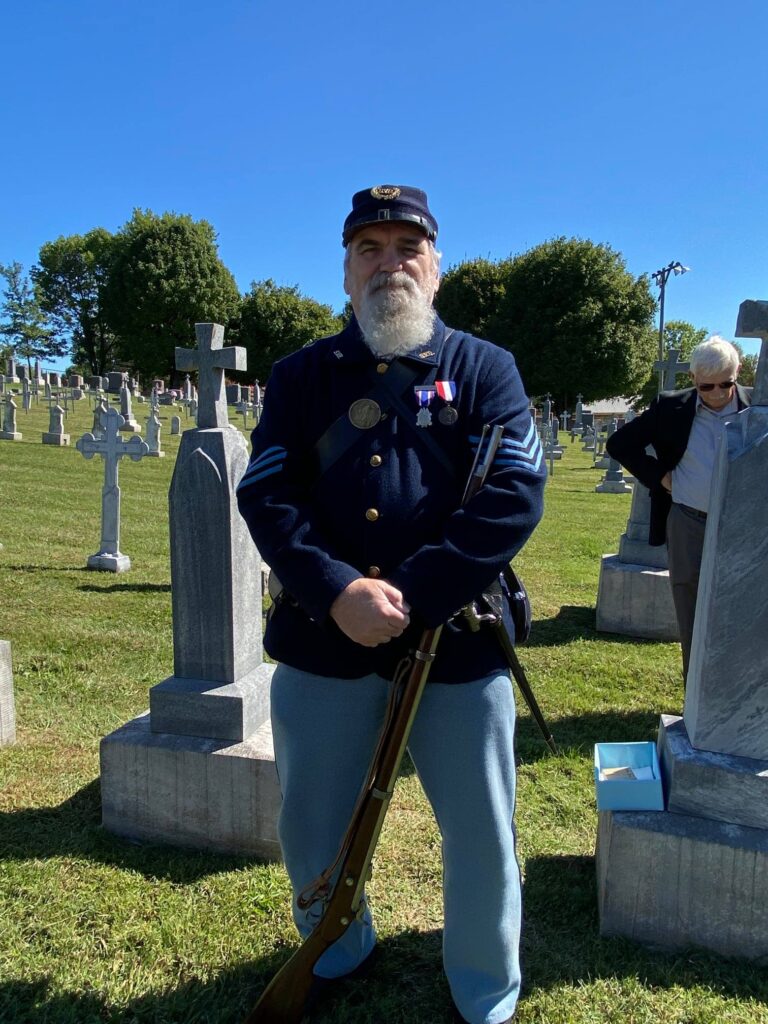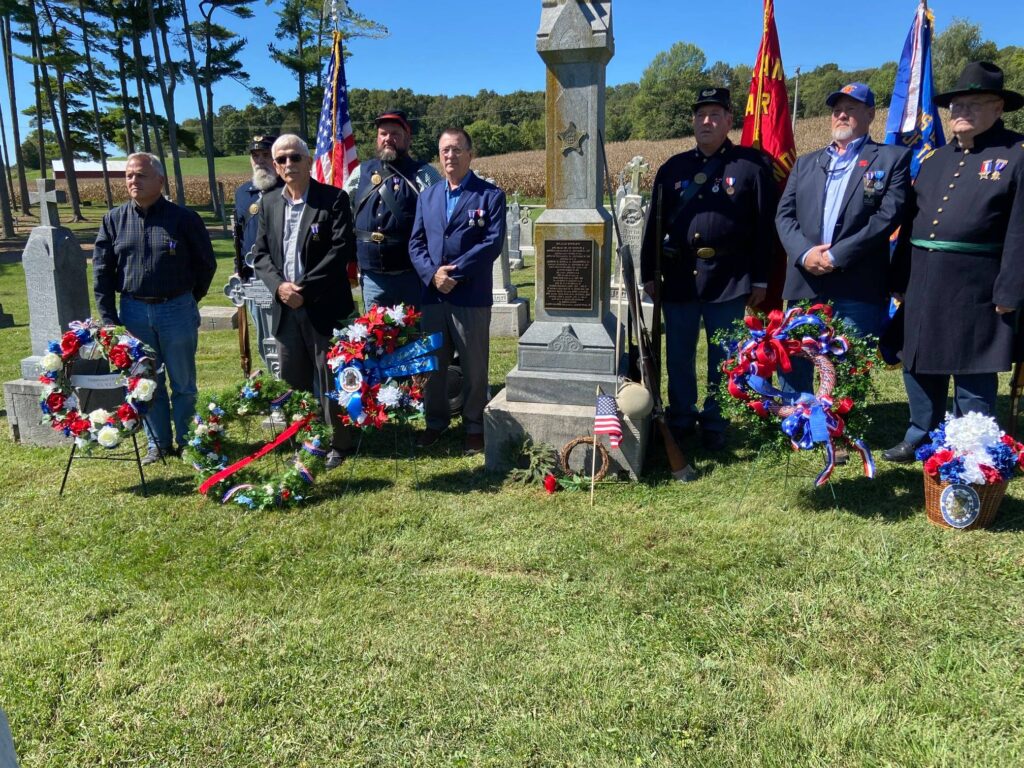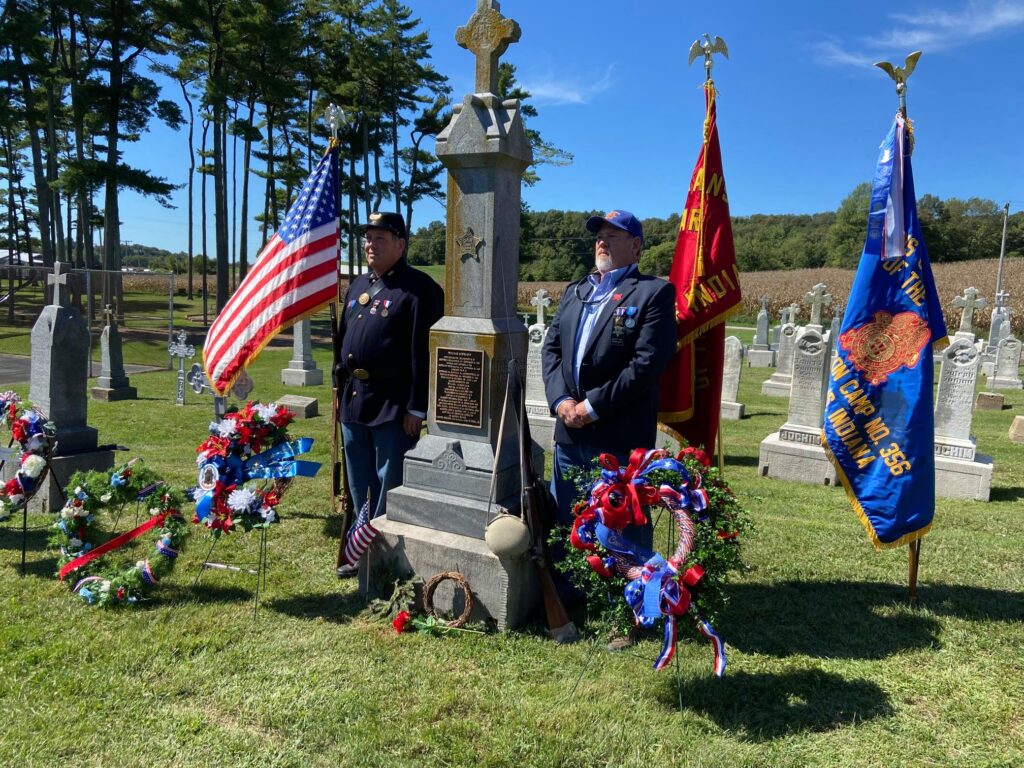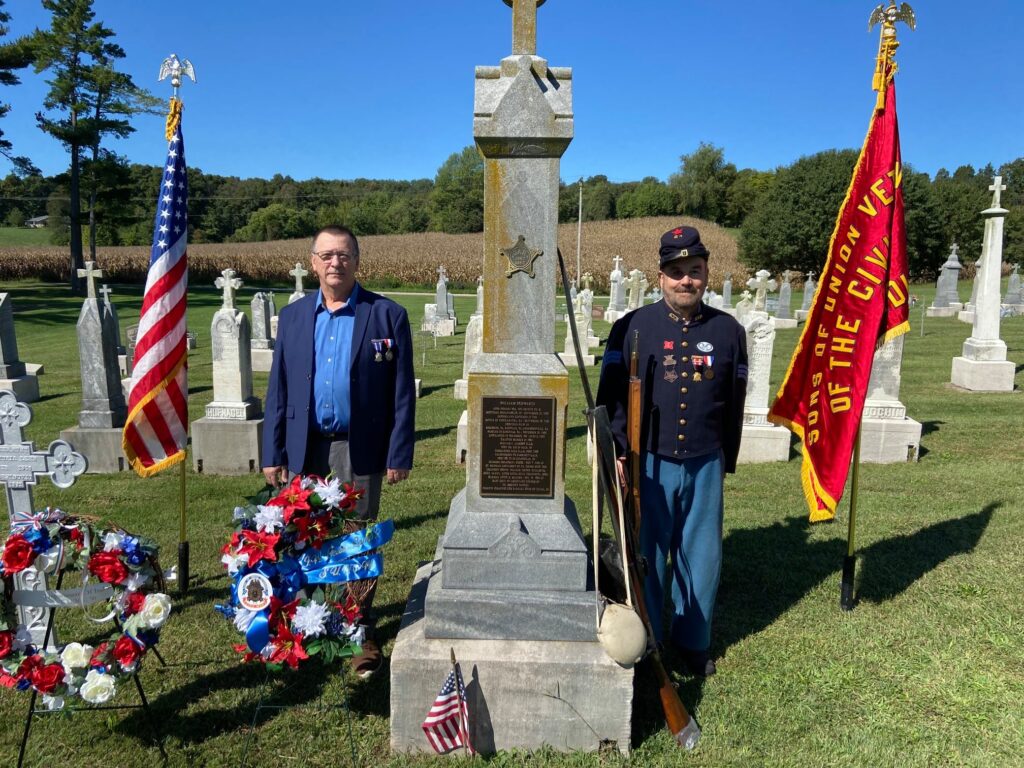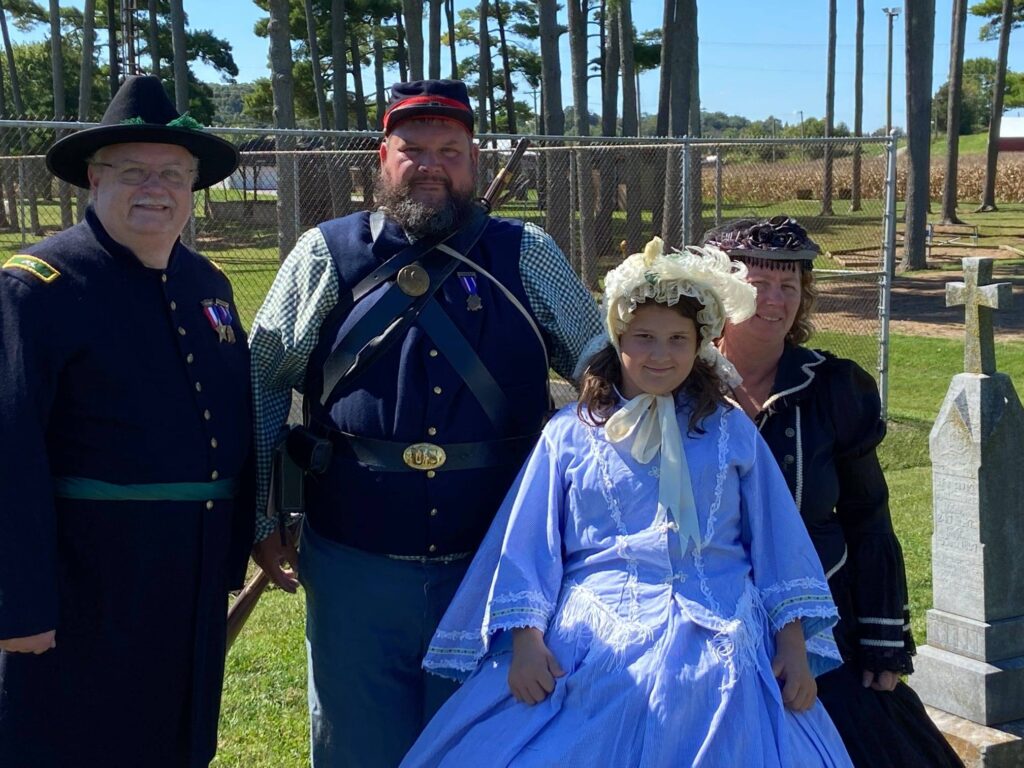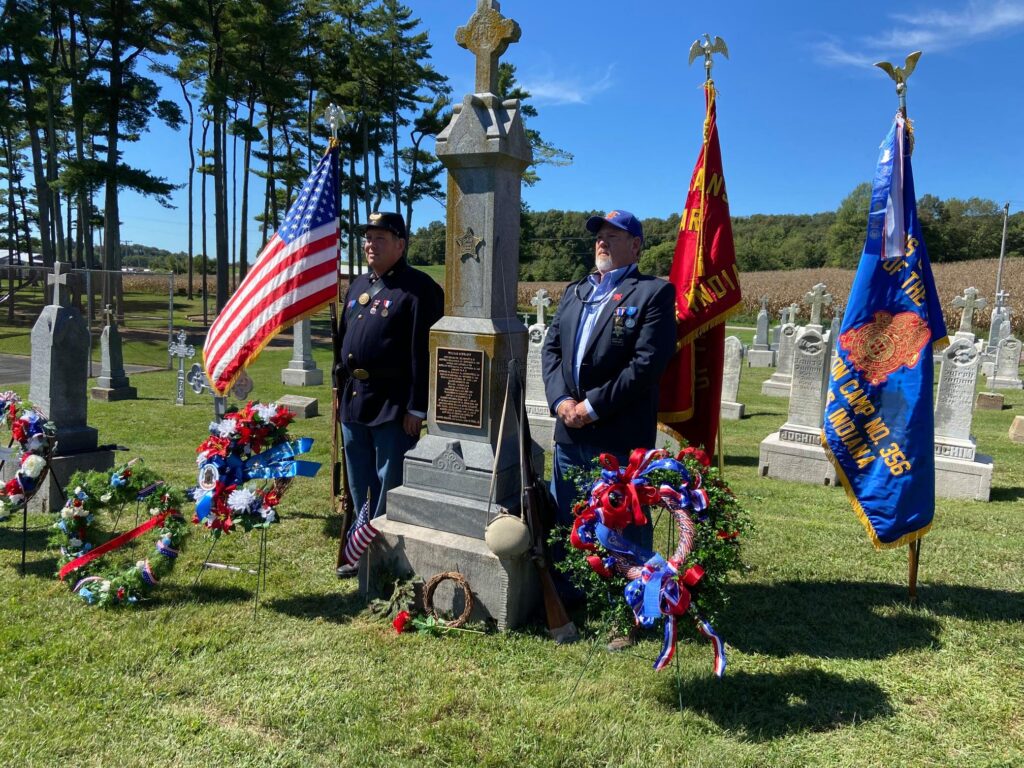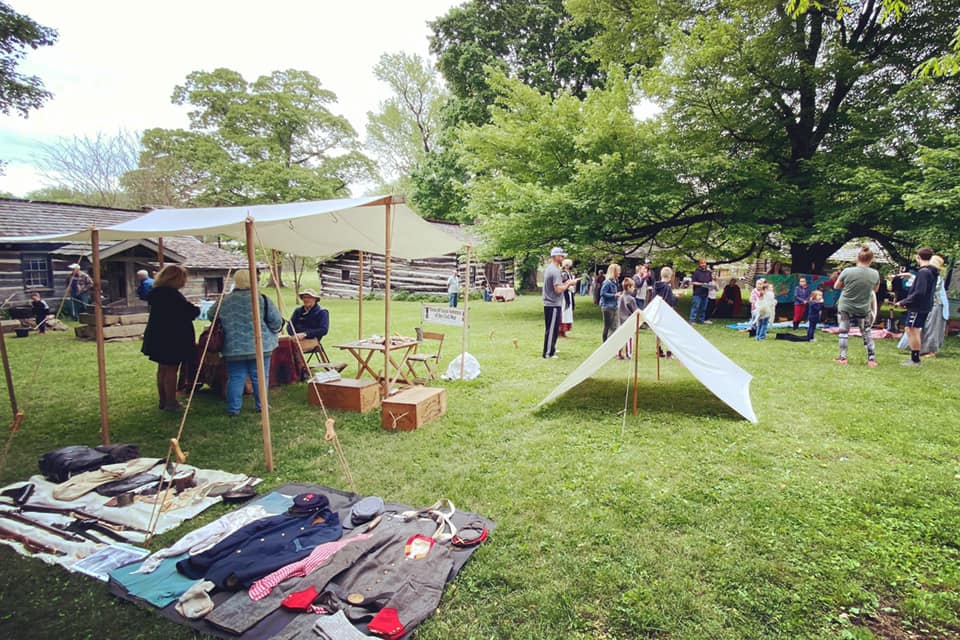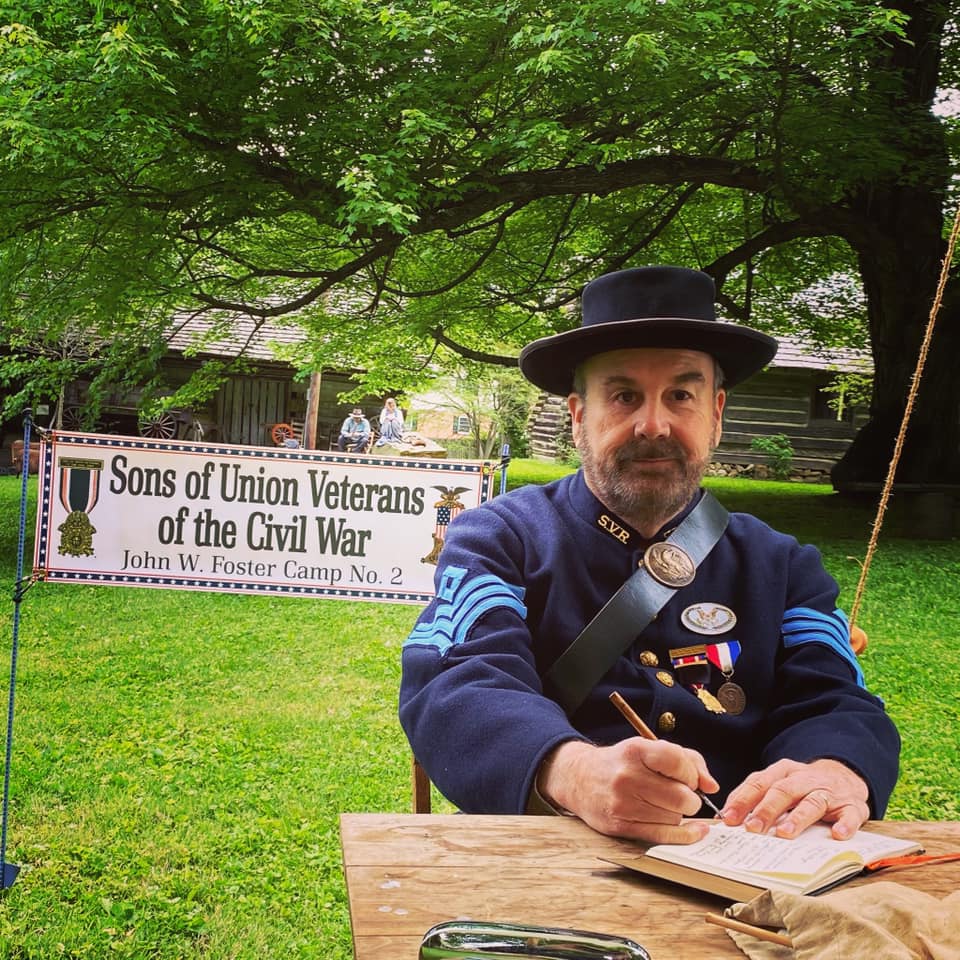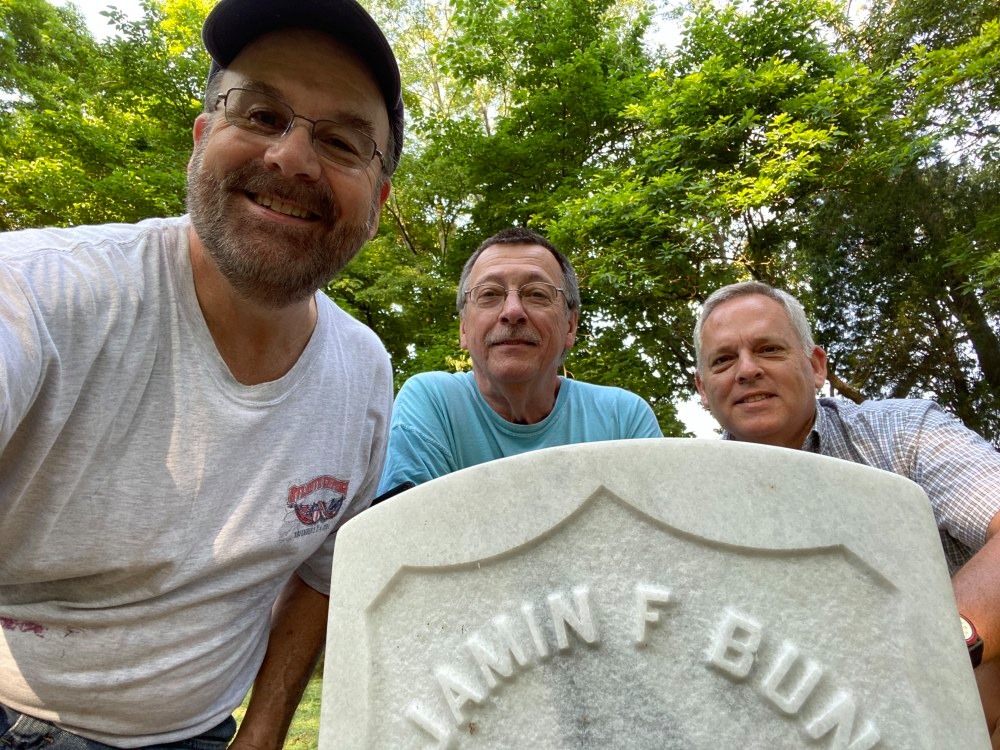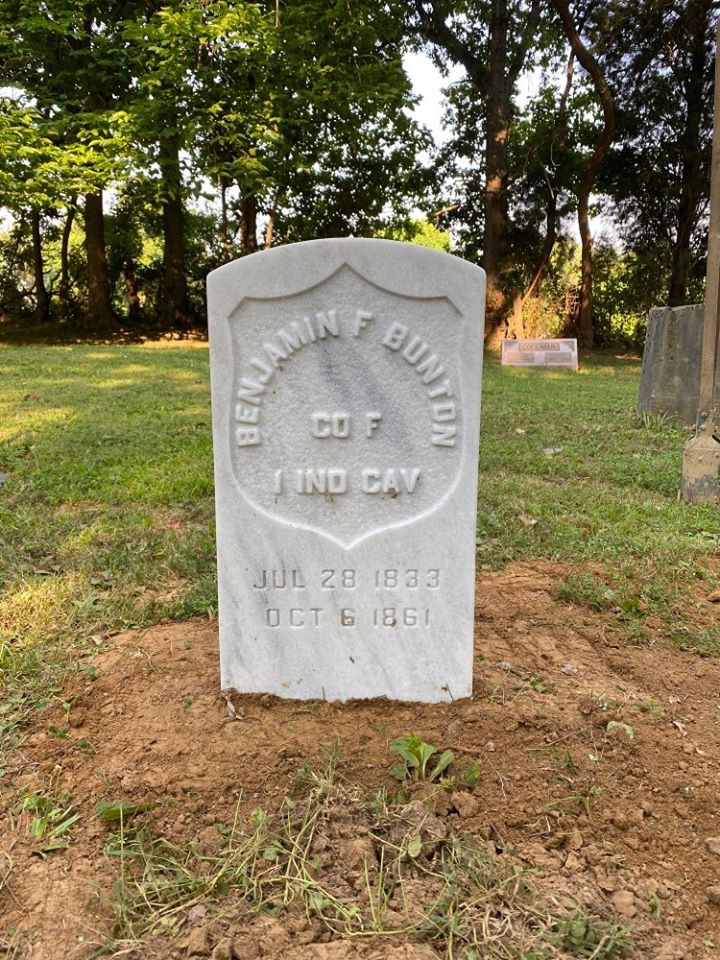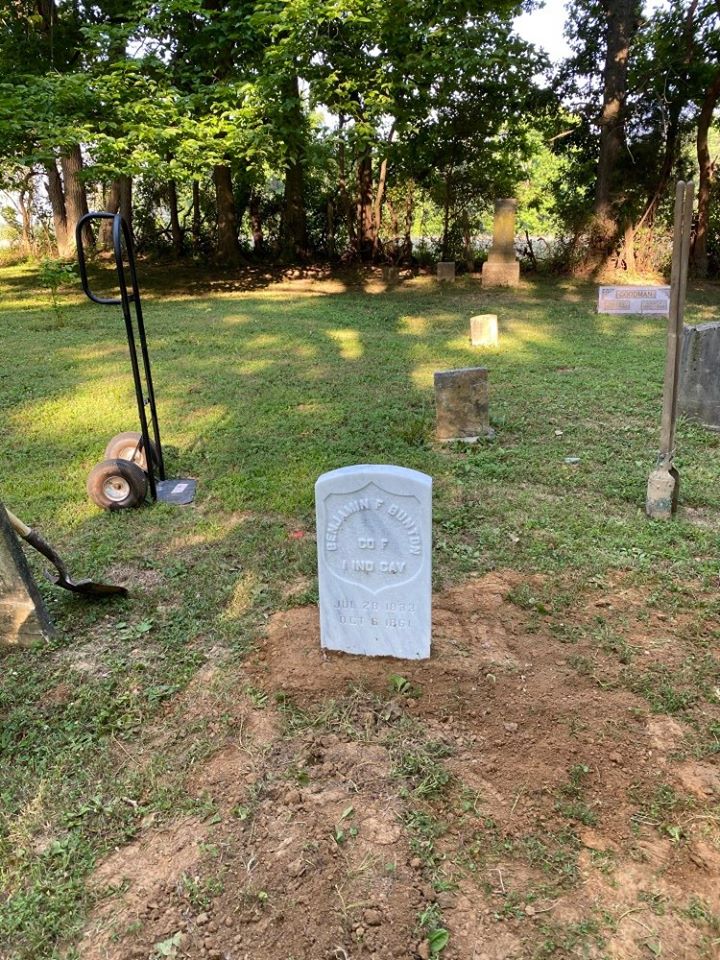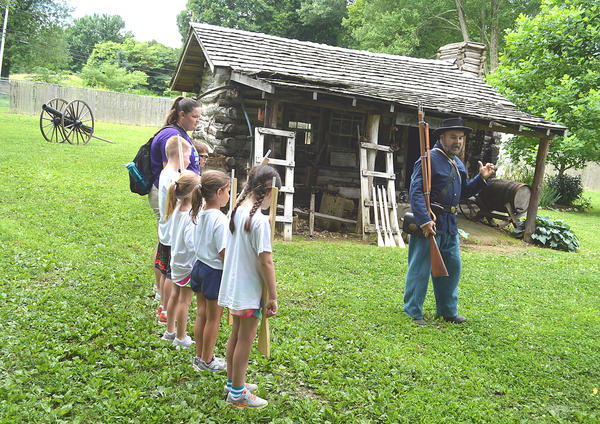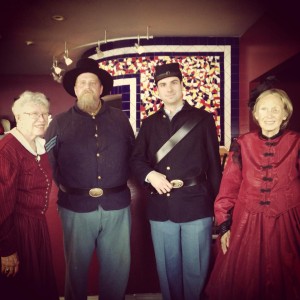George Winlock L.U.V. Ceremony
The SUVCW Foster Camp recently honored Corporal George W. Winlock, the last Civil War veteran buried in Vanderburgh County, Indiana.
Born into slavery in Logan County, Kentucky, on December 26, 1847, George W. Winlock spent his early years as a house boy and farmer for Adam Winlock. In August 1864, he left his enslavers to join the Union Army.
Winlock enlisted in the 115th U.S. Colored Infantry in Bowling Green, Kentucky, committing to a three-year term. Standing 5 feet, 7 1/4 inches tall, with black skin, hair, and eyes, he joined Company C of the 115th USCT the same day. However, the regiment wasn’t fully organized until October 21. Stationed in the District of Kentucky, Winlock and his unit performed garrison duty in Lexington until December. They then moved to Virginia in January 1865 to partake in the siege operations around Petersburg. After nearly three months, the 115th USCT entered Richmond on April 3, following the city’s abandonment by Confederate forces. Winlock and his comrades stayed in Virginia until May 20, 1865, before sailing to Texas. Promoted to Corporal on December 1, 1865, he served in the District of the Rio Grande until his regiment was mustered out on February 20, 1866, in Indianola, Texas.
After the war, Winlock returned to Russellville, Kentucky. In 1878, he married Mary Belle Loving, and they had a daughter, Louesther, born on October 3, 1881. The family moved to Evansville, Indiana, in 1884, where Winlock worked for the John and Clem Reitz sawmill until 1900. He then joined Schmenke’s Stove firm and later worked as a repairman for the Thiele Stove Company until his retirement.
Winlock joined Colonel John F. Grill Post No. 541 of the Grand Army of the Republic in Evansville and served as Post Quartermaster from 1897 until the Post disbanded in 1900. Instrumental in founding a new Post that same year, he became a Charter member of Fort Wagner Post No. 581, serving various roles including Chaplain, Delegate, and Jr. Vice Commander. He eventually became the Post’s last surviving member.
On June 10, 1939, at 91 years, 5 months, and 15 days old, George W. Winlock died of myocarditis. He was laid to rest in Locust Hill Cemetery, becoming the last Union veteran buried in Vanderburgh County, Indiana.
